Describe How Culture Impacts Communications From Criminal Justice Professionals
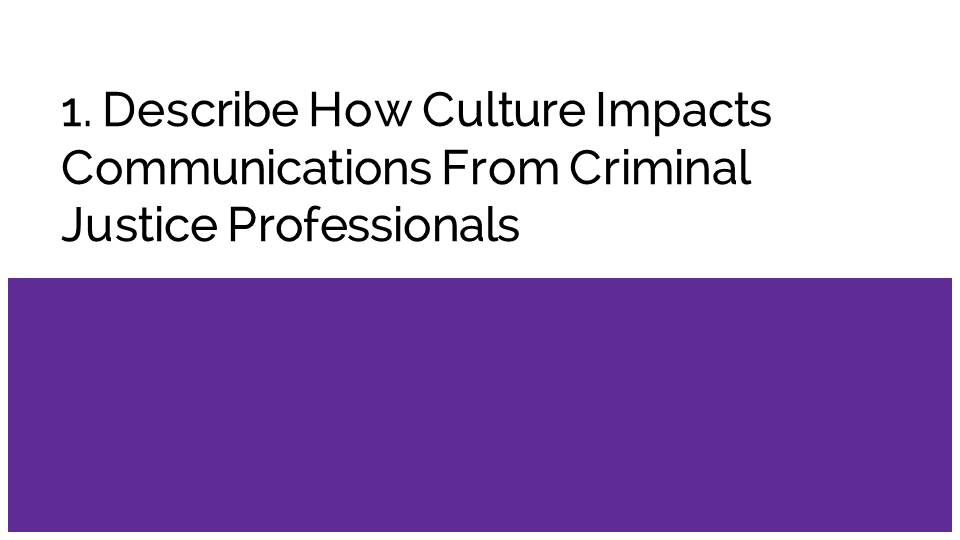
How Culture Impacts Communications From Criminal Justice Professionals
- Diverse culture causes results to miscommunication, in accuracies, and misunderstandings.
- Communication breakdowns may also occur when criminal justice officers assumes they have passed informaton sufficcently, when actually the recipient did not understand due to culture differences.
- Video recordings make stereotypes more apparent.
- Lack of cross cultural sensitivity may distort the motive of information relayed by the criminal justice officer.
- This may lead to unfair judgment and racial discrimination (Thompson, Newell, & Carlson, 2016).
- Race alludes to skin color while ethnicity refer to differences linked to cultural identification and expressions.
- Prejudice are the thoughts, beliefs, attitudes, and feelings of a person towards a specific group while discrimination is biased action towards a specific group.
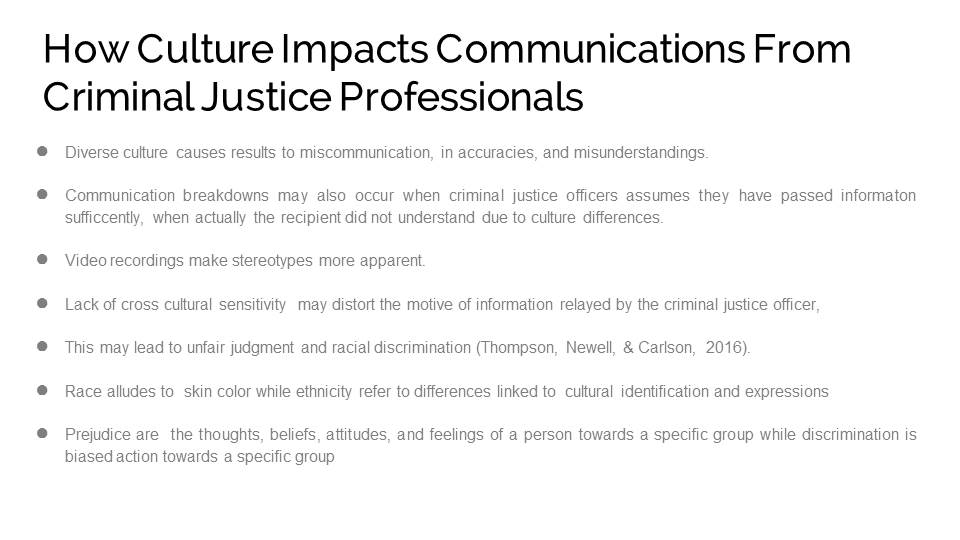
Miscommunication Example: Speaking
- The choice of language and non- verbal communication cues may cause miscommunication when speaking.
- For instance, It is not necessary for a victim advocate to state a client cultural identity. The use of polite form of languages and idioms may also create misunderstandings.
- Imperative language is considered rude by some Americans natives while other ethnic groups consider it rude.
- Therefore instead of saying follow the rules, one should say would you please follow the rules.
- Language barrier also causes miscommunication. Misspoken words can free individuals associated with crime. Hence, it hinders quest for justice.
Miscommunication in the criminal justice system leads to negative outcomes such as prejudice and racial profiling. Thus, an advocate should not state the race, ethnic group, culture, or religion of his client. This may be interpreted by others to mean they are different.
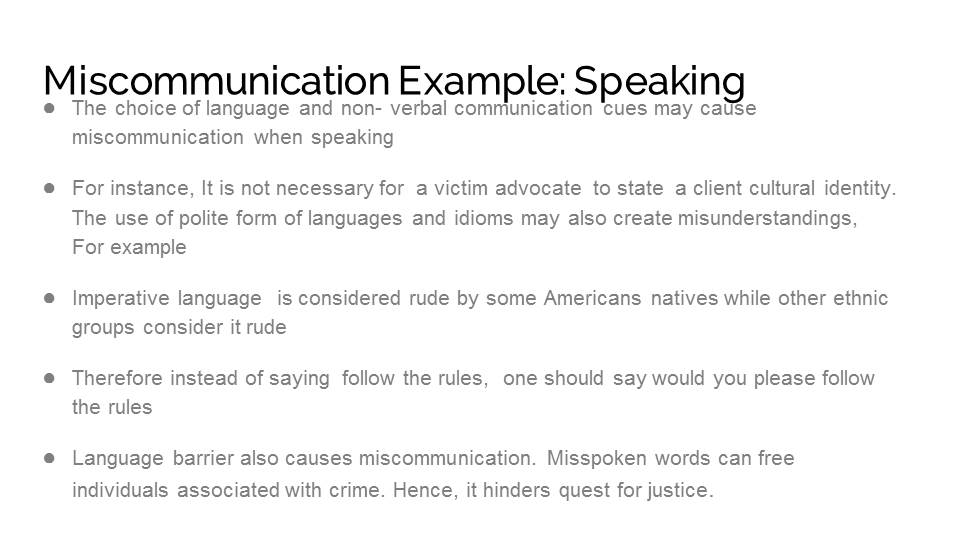
Miscommunication Example: Listening
- Effective listening is key to victim advocate because it builds a trust relationship with the client.
- The manner of listening vary in different cultural groups and also in the justice system.
- An example is missing out on a confession by a subject because the judge was not keen in listening as he or she expected continued denial of the crime.
- Court proceedings thus require one to maintain eye contact when listening.
Miscommunication in listening also exists in the criminal justice system.
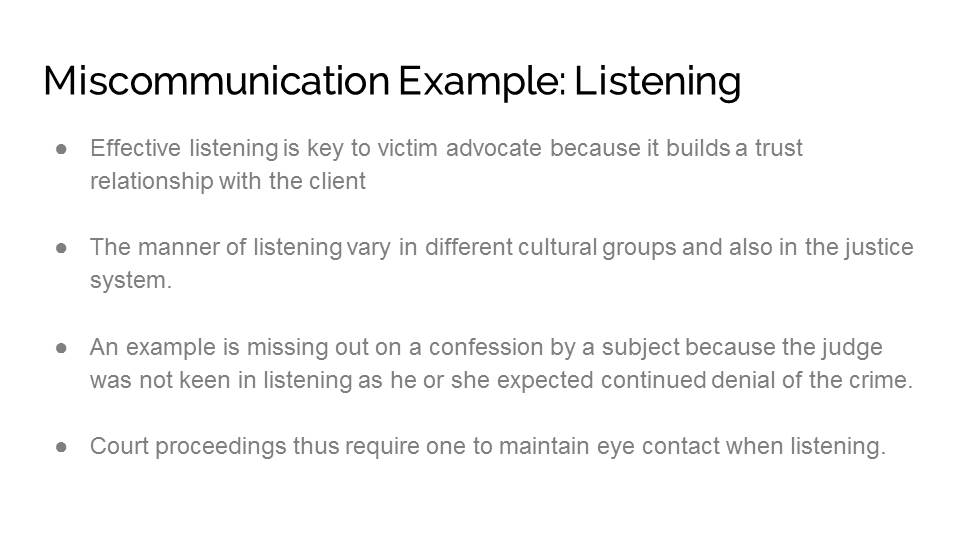
Explain How Cultural Stereotypes Can Negatively Influence Decision Making in Criminal Justice Settings
The criminal justice system is faced with major problems that contribute to the unfair treatment of offenders through undesirable judgments. Judicial bias limits the ability of the justice personnel to remain impartial in their line of duties, especially in court proceedings. In most criminal cases involving a white and a black, the determination of verdicts is at the discretion of the juries who rule in favor of a white offender. Additional some advocates are loyal to their race hence making a victim representation in the court ineffective.
The two theories explaining the effects of stereotypical decision making are the elaboration likelihood model and heuristic, systematic models. The models posit that the mode of thinking known as a regular route involves taking a deliberate, careful thought. In contrast, the heuristic route uses a short-cut by utilizing pre-existing knowledge, which is stereotypical. The Americans by birth are more favored compared to non-American citizens who risk deportation back to their countries.
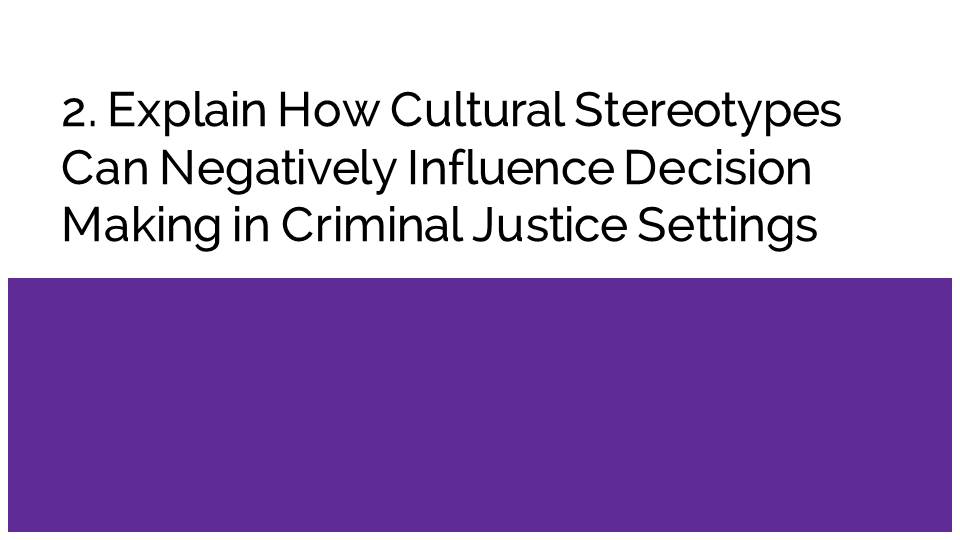
Stereotype: Race
- Black men are seen as robbers, drug traffickers, and swindlers in the society.
- This is sufficed by the fact that most eyewitness have an assumption that crime perpetrators were black.
- These stereotypes in the society affects judgments in a criminal justice system.
- A black suspect (George Floyd) was murdered by policemen because of racism.
- Bias against blacks is present in all stages of the justice process, it disadvantages them.
Generalization resulted to an innocent black man to experience longer and harsher sentences for a crime he never committed than a white person who indeed committed the crime.

Stereotype: Ethnicity
Stereotypes:
- All people belonging to a specific ethnic group are criminals;
- People with the same culture share the same characteristics;
- Some ethic groups are harsh or hostile.
This ethnic stereotypes affects how an advocate handles a case.
For example, the rights of the Latinos have been jeopardized in the U.S judicial system due to stereotypes that Latinos largely engage in federal crimes.
Generalization led to poor decision making by victimizing innocent Latinos for crimes they never committed.
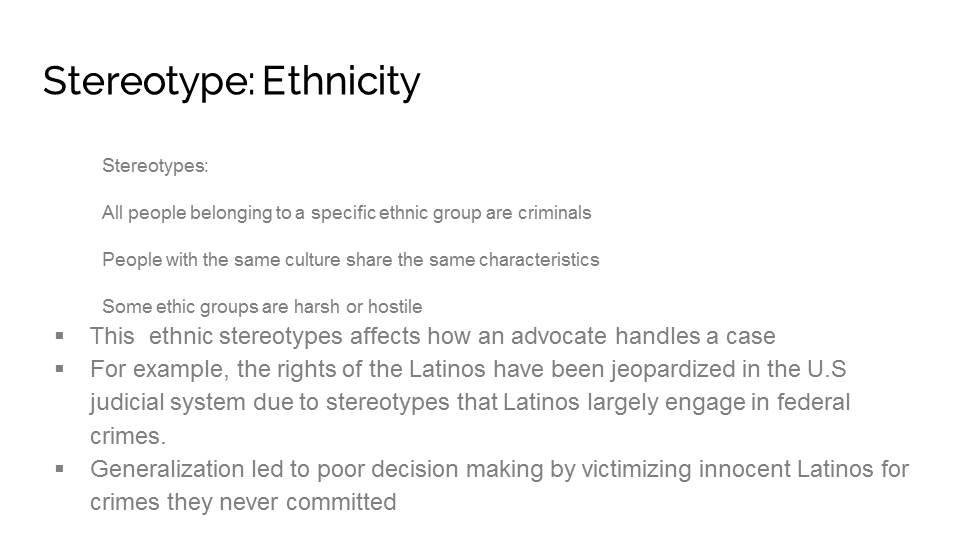
Stereotype: Religion
- Members of minority religious groups are mostly charged guilty by jurors.
- Muslims are stereotyped as terrorist, cold, and incompetent.
- Thus, religious affiliation affects sentencing decisions and verdicts.
- Members of board of Holy Land Foundation are serving 65 years in jail terms, which are harsher that of murder trials.
- This period is longer than that of murder, yet the victims were arrested without evidence.
- Jurors make rationalize verdicts due to stereotypes and Muslim are treated unfairly.
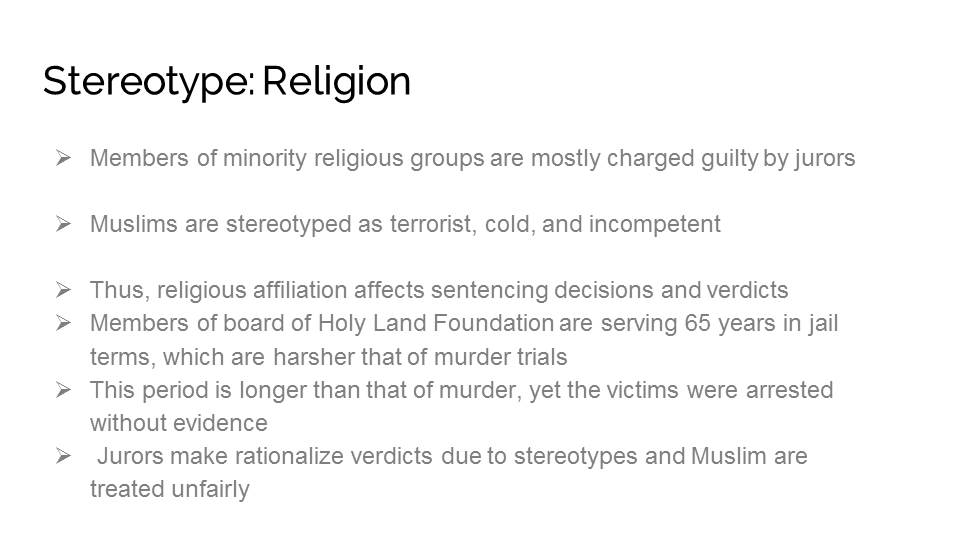
Explain How Diversity Stereotypes Can Negatively Influence Decision Making in Criminal Justice Settings
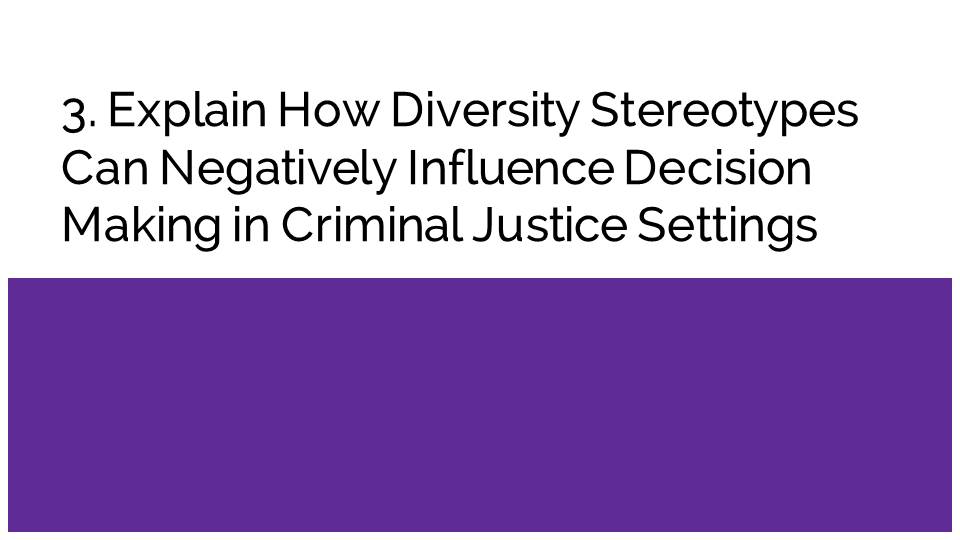
Stereotype: Socioeconomic Status
- Poor people are lazy, criminals, and cursed.
- In the criminal justice system, a lack of income violates parole requirements for ex-offenders.
- African American are more likely to be convicted for crimes they did not commit.
- A 67-year-old poor woman was jailed for not being able to pay trash-removal citation fine in Fergusson.
- Poor people rarely get justice due to lack of finances to hire a good lawyer.
- Stereotypes based on socioeconomic lead to disparities in the justice system where it is believed that minority groups such as African Americans commit more crimes to meet their needs.
- Lack of income increases the chances of for a poor person to return to jail.
- A 67-year-old woman was jailed for not paying related to a trash-removal citation. The court imposed fines totaling $1,000, which she struggled to pay in $100 monthly installments.
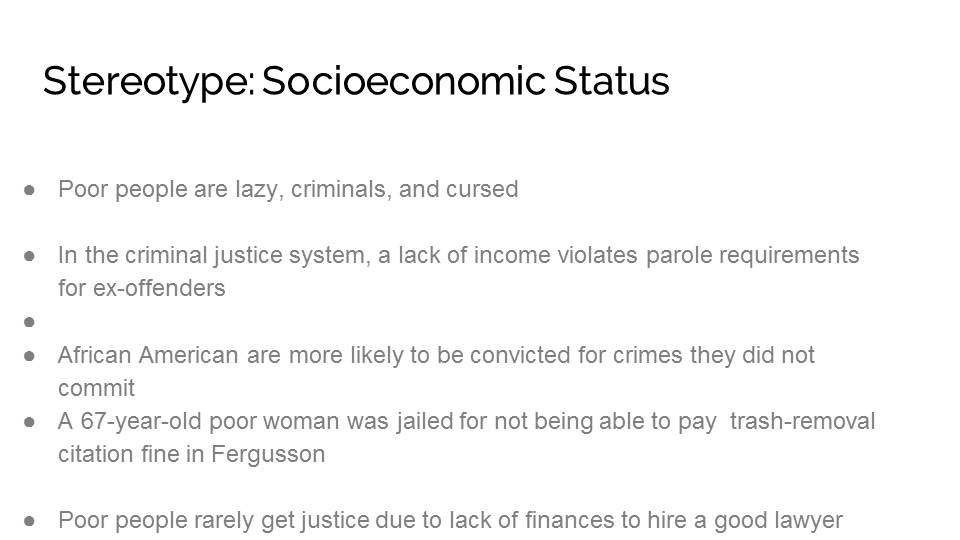
Stereotype: Gender
- Generally women are perceived as weak people in the society, this is a stereotype.
- Black women are considered as welfare queen because they are presumed to be trouble makers.
- In some societies they are stereotyped as lazy people who depend on government aid.
- A rape case filed by a woman was dismissed by a judge on grounds that physical resistance to the attackers was not exhibited (Nitschke, McKimmie, & Vanman, 2019).
- These stereotypical assumptions have made offenders to be dismissed without judgements in the court.
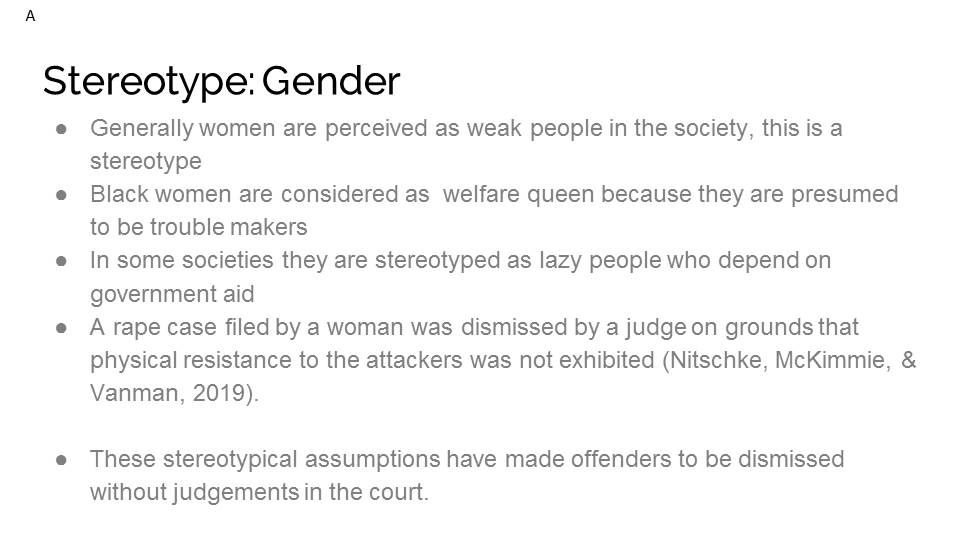
Stereotype: LGBTQ+ Status
- The LGBTQ have attracted much stereotypical conceptions based on their practices.
- They face discrimination with the criminal justice system as victims and perpetrator of crimes.
- In most cases, LGBTQ are victims of hate crime in the society hence they need representation from an advocate in the court of law (Carr & Johnson, 2018).
- For example, a case of sodomy was presented by a young man for being molested by his peers.
- The judge assumed that the guy was gay and justice was not granted.
- This generalization led to more cases of sodomy by the perpetrators due to leniency in handling related cases.
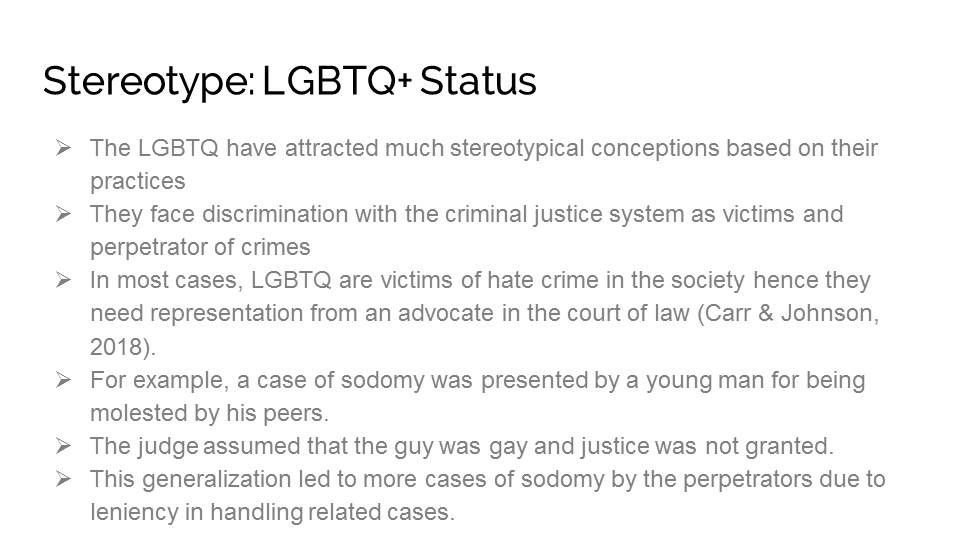
Stereotype: Age
- Discrimination against the elderly is common.
- The law needs assault motivated by religion, race, sexual orientation or disability to receive a higher sentence relative to random assault. Age should have been added to this list.
- Representation of a minor victim elicits sympathy , which may lead to biasness in making judgement.
- For example, an elderly man of 50 years is sentenced to 10 years in jail while a 16 year old boy is sentenced to 2 years in juvenile for committing similar crime.
- The outcome was repeated criminal acts by the young boy after completing the jail term.
The judicial system treats young offenders with leniency compared to older criminals because it is believed that the young hardly knows what is right or wrong. The elderly also receives less harsh sentences compared to youthful citizens.
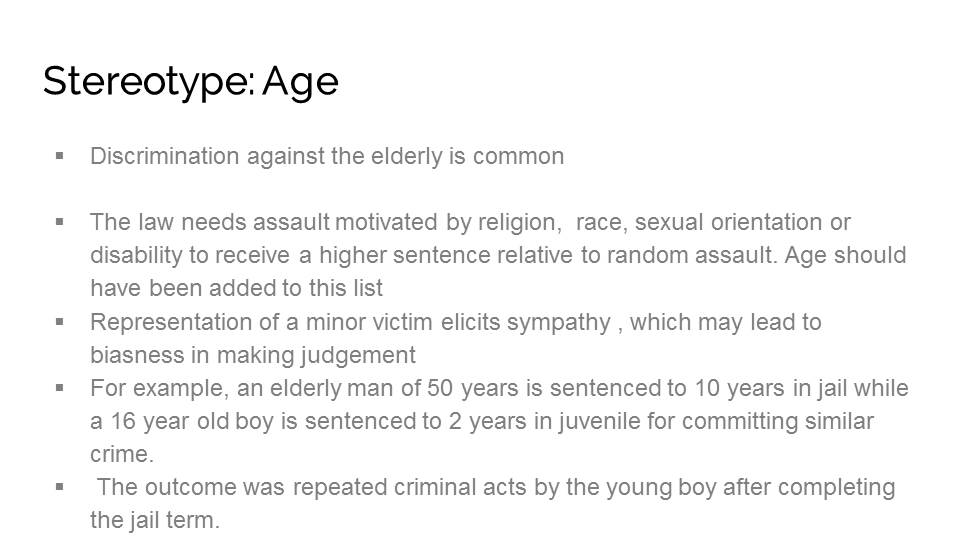
Stereotype: Disability
- The stereotypes include: disabled people have lesser rights, their conditions can not attract someone to offend them, and they are pathetic.
- Most of them have failed to obtain justice when offended.
- For example, the mentally challenged have on several occasions been raped but their cases go unmentioned.
- This is because they are perceived to have lesser rights compared to other people.
- Generalization about people with disabilities leads to poor decision in court.
- Crimes against them continue due to their inability to be heard.
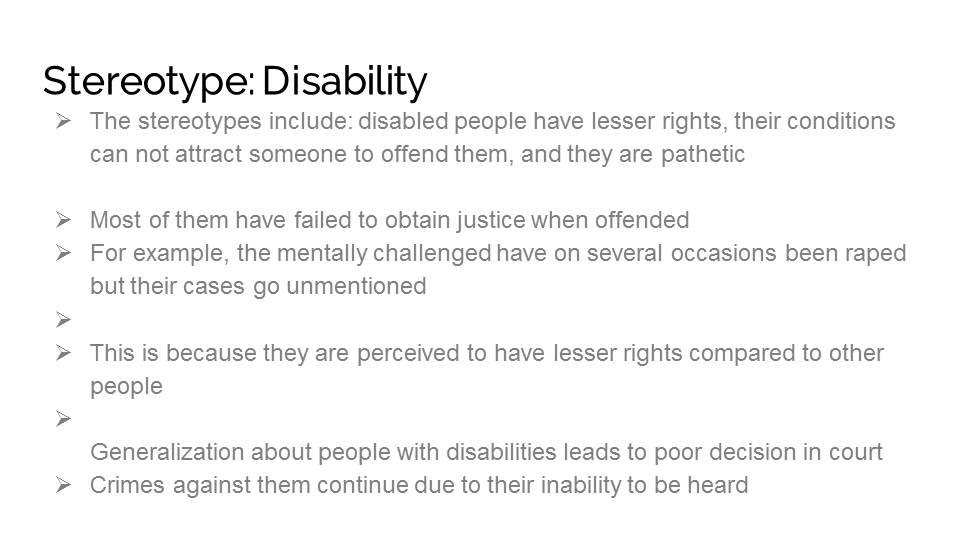
History Behind Stereotyping
- Before the 20th century, the whites depicted the blacks as poor, lazy, dump and uncivilized and hence inferior to the whites.
- These stereotypes justified slavery and inhuman treatment towards the blacks.
- Law institutions classified people of color under low socioeconomic positions.
- Stereotypes occurred due to frequent exposure to threats, and existence of various identities based on age, gender, socioeconomic status and race.
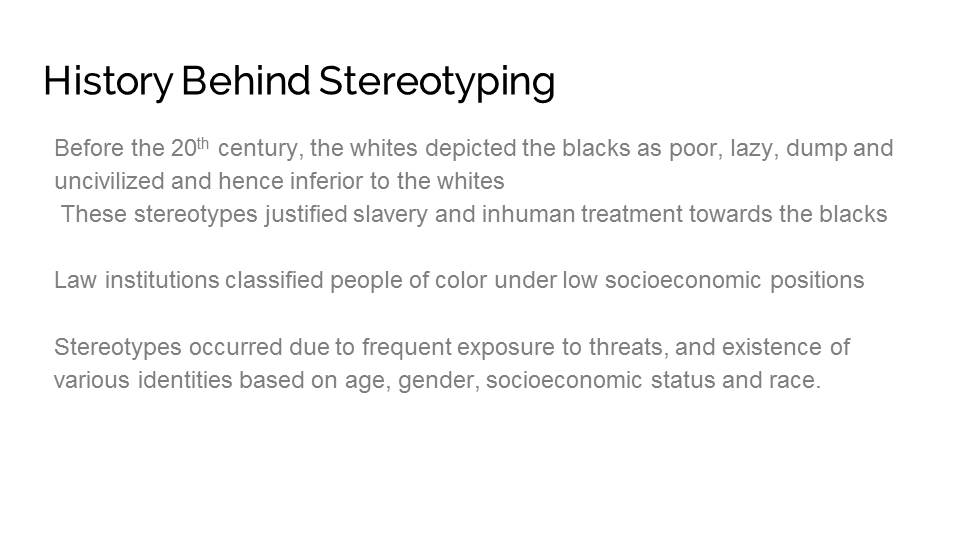
Explain How Personal Bias May Influence Speaking and Listening
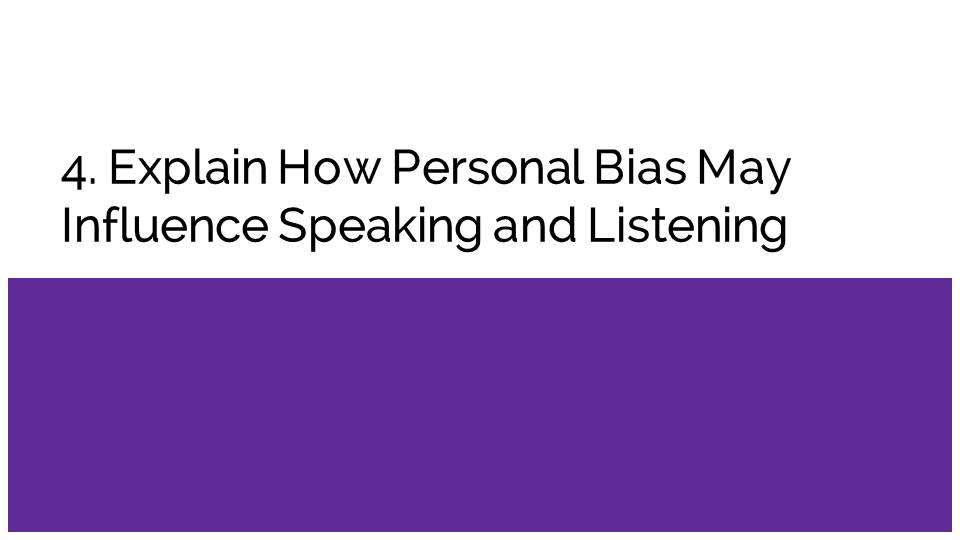
Personal Bias May Influence Speaking and Listening
- Ethnocentrism is where people perceive a particular way of doing things is fundamentally right.
- The outcome of ethnocentric behavior is making a biased judgment against those outside their group.
- Explicit bias is the strategic conscious use of actions and language to counter threats to wellbeing.
- Implicit bias in the criminal justice system is prejudice rooted in one’s brain that makes a person to undertake actions or decisions in the absence of a conscious mind.
- Implicit bias: A policeman can easily shoot a black man compared to a white man.
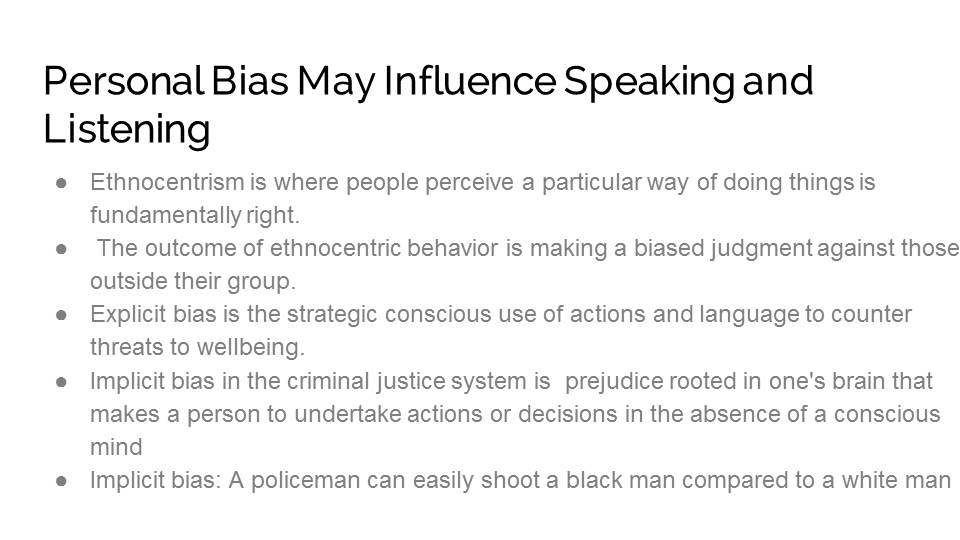
References
Carr, C. L., & Johnson, L. (2018). Law, cultural diversity, and criminal defense. Routledge. Portland.
Nitschke, F. T., McKimmie, B. M., & Vanman, E. J. (2019). A meta-analysis of the emotional victim effect for female adult rape complainants: Does complainant distress influence credibility?. Psychological Bulletin, 145(10), 953-954.
Thompson, M., Newell, S., & Carlson, M. J. (2016). Race and access to mental health and substance abuse treatment in the criminal justice system. Journal of Offender Rehabilitation, 55(2), 69-94.